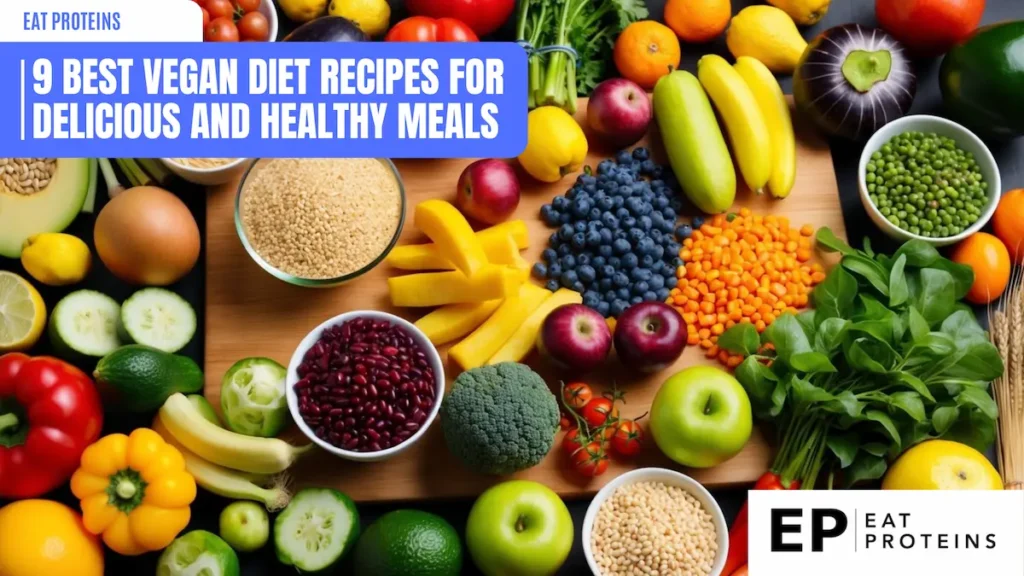
Exploring a vegan diet can be both exciting and rewarding, offering a wide array of delicious meal options. Many people may wonder how to create meals that are not only satisfying but also packed with nutrients. I have found that the right vegan recipes can provide an excellent balance of flavors, ingredients, and health benefits.
In this article, I will share the nine best vegan diet recipes that I have discovered. These recipes showcase diverse ingredients, making them appealing to anyone, regardless of their dietary preferences. Each recipe is designed to be simple to prepare while delivering great taste and nutritional value.
1. Vegan Mushroom Stroganoff
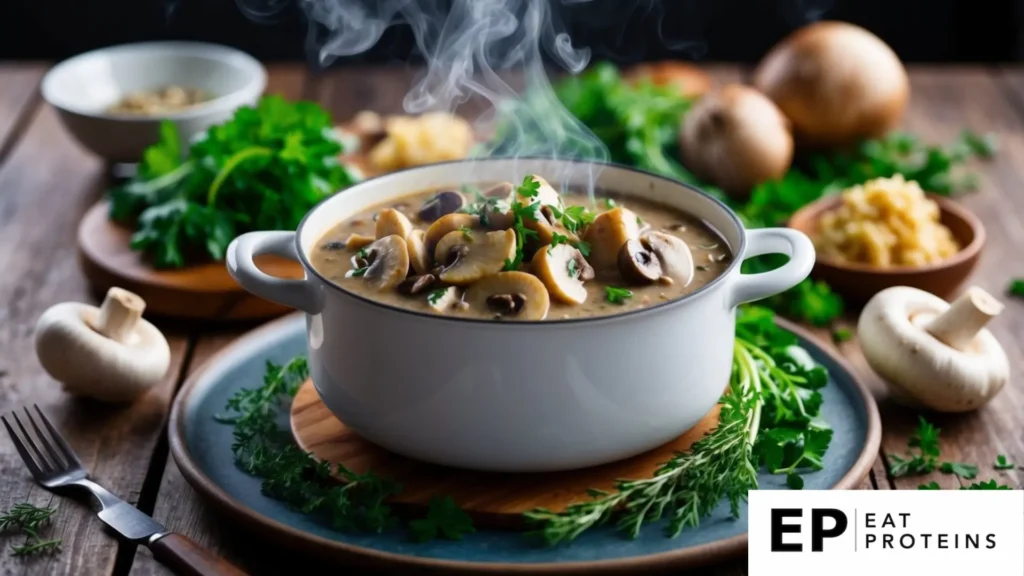
Vegan Mushroom Stroganoff is a delicious, plant-based twist on a classic comfort food. It is creamy and rich, featuring mushrooms as the main ingredient. This dish is perfect for a filling dinner.
I find it easy to make, requiring basic kitchen skills. The main ingredients include mushrooms, pasta, vegetable broth, and a plant-based cream.
To cook, follow these simple steps:
- Cook your favorite pasta according to the package instructions.
- In a pan, sauté sliced mushrooms and onions until soft.
- Add garlic and cook for another minute.
- Pour in vegetable broth and bring to a simmer.
- Stir in plant-based cream and season with salt and pepper.
- Mix the sauce with the cooked pasta.
This meal can be ready in about 30 minutes, making it perfect for a busy weeknight. I enjoy serving it with a side salad for a complete meal.
2. Chickpea Tikka Masala
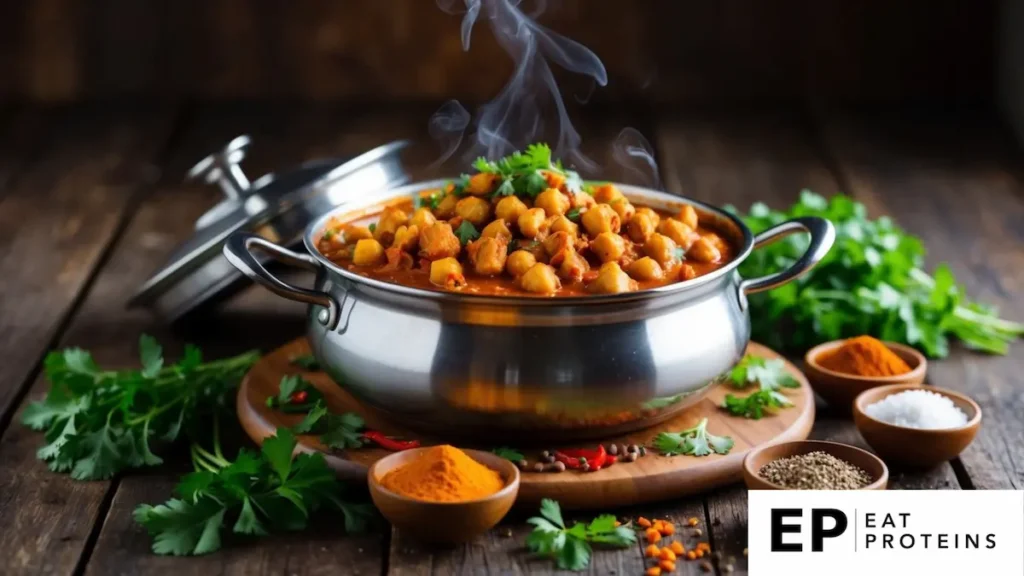
Chickpea Tikka Masala is a flavorful vegan dish that combines chickpeas with a rich tomato-based sauce. This dish is easy to prepare and perfect for a hearty meal.
To make this recipe, I start by gathering my ingredients. You will need canned chickpeas, diced tomatoes, onion, garlic, ginger, and spices like cumin and garam masala.
Here are the steps I follow:
- Sauté one chopped onion in a pan until it’s golden brown.
- Add minced garlic and ginger, cooking for an additional minute.
- Stir in one can of diced tomatoes and your spices. Cook for 5 minutes.
- Add one can of rinsed chickpeas and simmer for 10-15 minutes.
- Adjust salt to taste and serve hot with rice or flatbread.
Chickpea Tikka Masala is not only quick to make, but it also offers a satisfying meal. Enjoying it with rice or naan adds to the overall experience.
3. Lentil Bolognese
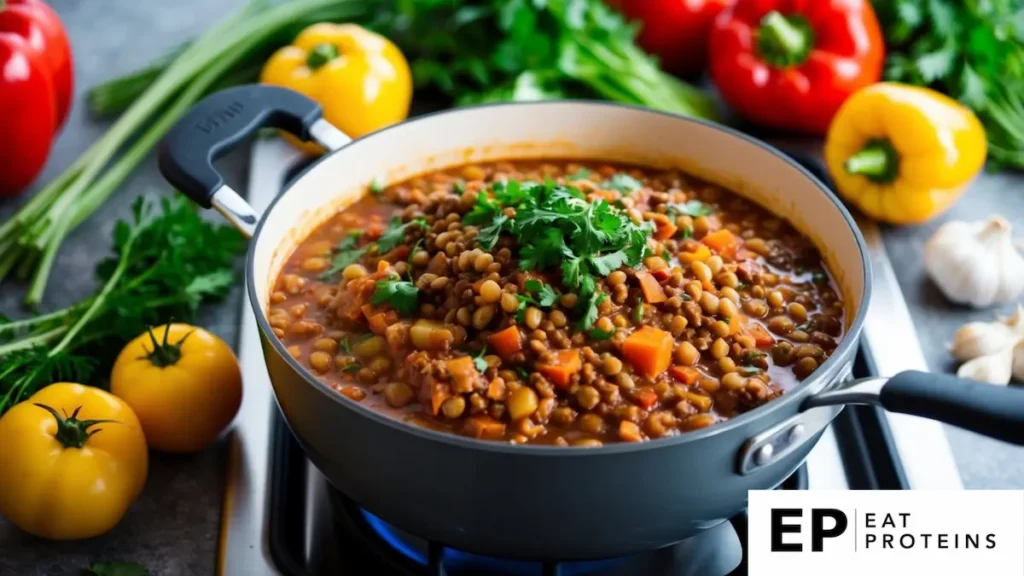
Lentil Bolognese is a hearty, plant-based version of the traditional meat sauce. It uses lentils as the main protein source, making it nutritious and filling.
I find it easy to make, and it can be ready in about 30 minutes. This dish is perfect for those busy weeknights or meal prep.
Here are the simple steps I follow:
- Sauté vegetables: I start by heating olive oil in a pan and adding chopped onions, carrots, and celery. I cook them for about 5 minutes until they soften.
- Add garlic: Next, I add minced garlic and cook for another minute for flavor.
- Mix in lentils and tomatoes: I then stir in cooked lentils, canned diced tomatoes, and tomato paste. I let it simmer for 15 minutes.
- Season: Finally, I add dried herbs like oregano and basil, along with salt and pepper to taste.
This Lentil Bolognese is excellent served over pasta or spaghetti squash. It’s a satisfying dish that I enjoy sharing with family and friends.
4. Buffalo Cauliflower Tacos
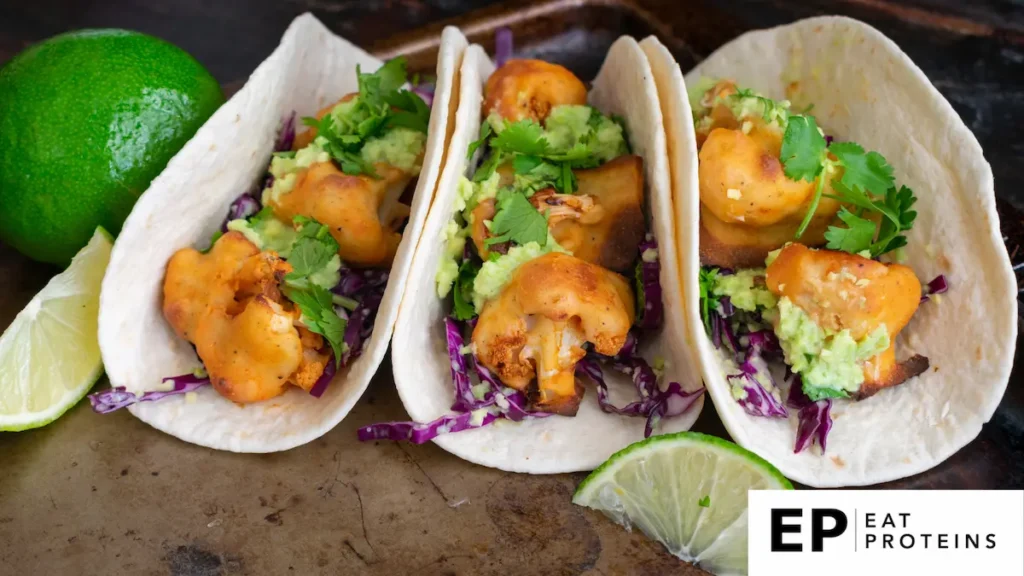
Buffalo cauliflower tacos are a delicious and healthy alternative to traditional meat tacos. They use roasted cauliflower tossed in a spicy buffalo sauce, providing flavor and texture.
Making these tacos is quite simple and takes about 30 minutes. First, I gather my ingredients: cauliflower, buffalo sauce, taco shells, and toppings like lettuce and avocado.
Here’s how I prepare them:
- Preheat the oven to 450°F (230°C).
- Cut a head of cauliflower into bite-sized florets.
- Toss the florets with olive oil and salt.
- Roast them for 20 minutes, until they are tender and golden.
- In a bowl, mix the roasted cauliflower with buffalo sauce.
- Fill taco shells with the buffalo cauliflower and top with your choice of toppings.
These tacos pack a spicy punch and are perfect for a quick weeknight meal or a fun gathering. Enjoying them is an easy way to include plant-based options in my diet.
5. Quinoa Stuffed Bell Peppers
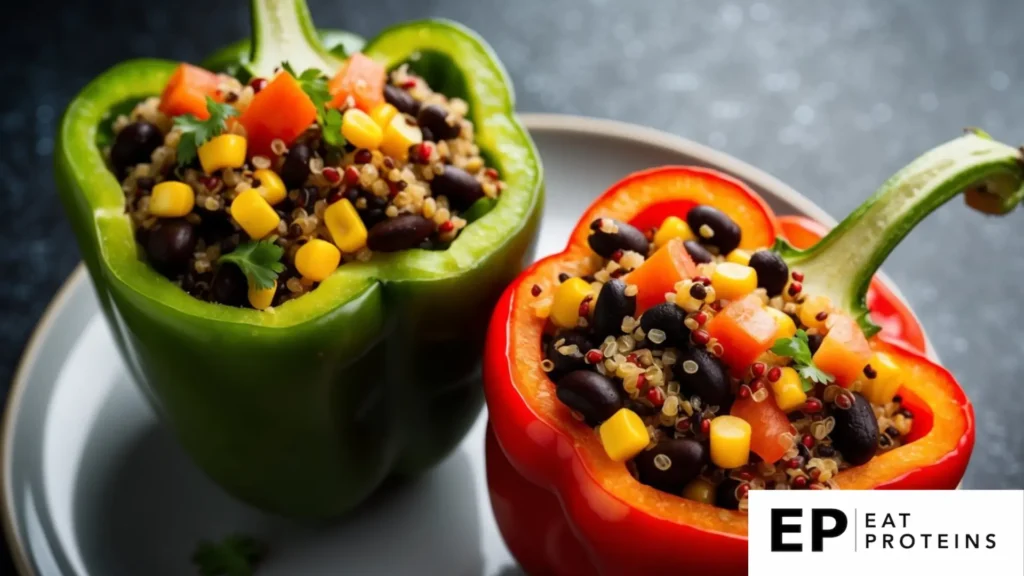
Quinoa stuffed bell peppers are a healthy and tasty dish. Quinoa is a grain-like seed that is high in protein and gluten-free. It makes a great base for stuffing vegetables.
I find this recipe easy to make and perfect for a weeknight meal. Here are the steps to prepare them:
- Preheat your oven to 375°F (190°C).
- Cook 1 cup of quinoa according to package instructions.
- While the quinoa cooks, prepare 4 bell peppers by cutting the tops off and removing the seeds.
- In a bowl, mix the cooked quinoa with black beans, corn, diced tomatoes, and spices.
- Stuff each bell pepper with the quinoa mixture.
- Place the stuffed peppers in a baking dish and cover with aluminum foil.
- Bake for 30 minutes. Remove the foil and bake for an additional 10 minutes.
These stuffed peppers are not only colorful but also provide a balanced meal. Enjoy them warm for a satisfying vegan option.
6. Vegan Shepherd’s Pie

Vegan Shepherd’s Pie is a hearty dish that replaces meat with lentils or mushrooms. This dish is rich in flavor and can be enjoyed by everyone.
I find it easy to make. The whole process takes about an hour. Plus, it’s simple to prepare with ingredients you likely have at home.
Here are the basic steps to cook it:
- Preheat the oven to 400°F (200°C).
- Cook diced onions, carrots, and peas in a pan for about 5 minutes.
- Add cooked lentils and your choice of spices, then cook for another 10 minutes.
- Prepare mashed potatoes by boiling potatoes until soft, then mash with a little plant-based milk and seasoning.
- Spread the lentil mix in a baking dish, then top with the mashed potatoes.
- Bake for 25 minutes.
I enjoy this dish because it’s filling and comforting. It’s perfect for any meal and can be made ahead of time.
7. Thai Peanut Veggie Stir-Fry
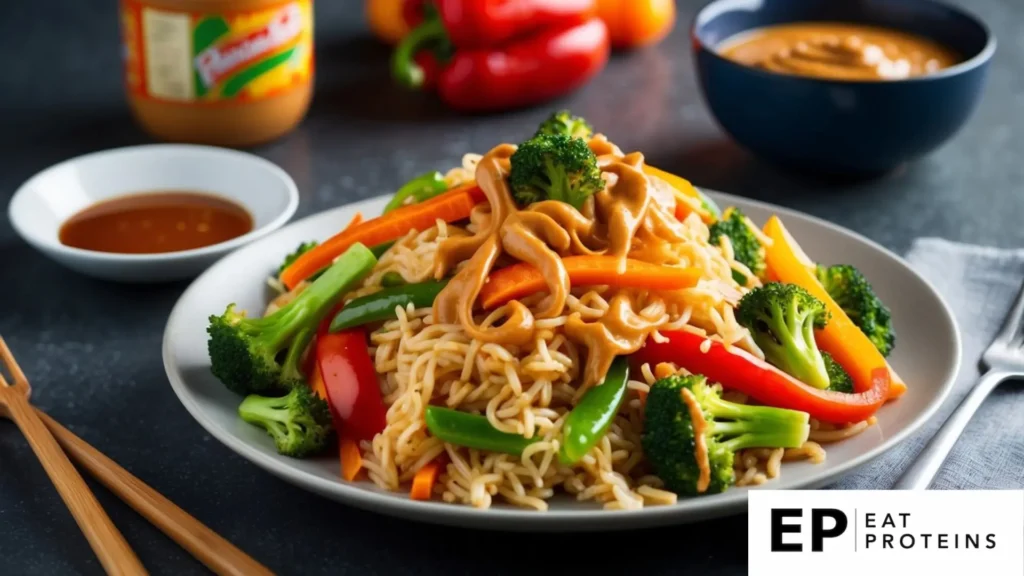
Thai Peanut Veggie Stir-Fry is a delicious dish that combines colorful vegetables with a rich peanut sauce. It’s a great option for anyone looking to enjoy a healthy vegan meal.
I find this recipe easy to make, perfect for busy weekdays. It takes about 30 minutes from start to finish.
To prepare, I usually gather the following ingredients:
- 1 cup rice noodles
- 2 tablespoons peanut butter
- 1 tablespoon soy sauce
- 2 cups mixed vegetables (like bell peppers, carrots, and broccoli)
- 1 tablespoon oil for frying
- Optional toppings: crushed peanuts and cilantro
Here are the steps:
- Cook the rice noodles according to the package instructions and set aside.
- In a pan, heat the oil over medium heat.
- Add the mixed vegetables and stir-fry for about 5-7 minutes, until they are tender-crisp.
- Stir in the peanut butter and soy sauce, mixing well.
- Add the cooked noodles and toss everything together for another 2-3 minutes.
This dish is filling and packed with flavor while being simple to prepare.
8. Sweet Potato Black Bean Enchiladas
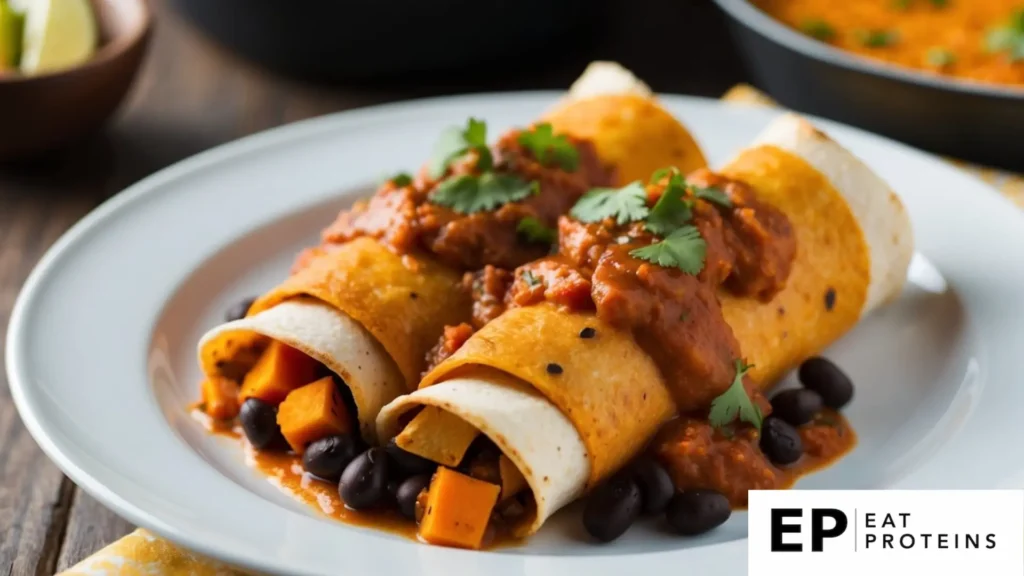
Sweet potato black bean enchiladas are a delicious and healthy dish. They combine the rich flavors of sweet potatoes and black beans, making them both filling and nutritious.
Making these enchiladas is easy. I can prepare them in about 30 minutes. Here’s a simple method to follow:
- Preheat the oven to 375°F (190°C).
- Peel and dice 1 large sweet potato, then steam it until tender, about 10 minutes.
- In a bowl, mix the cooked sweet potato with 1 can of drained black beans, 1 teaspoon of cumin, and salt to taste.
- Fill corn tortillas with the mixture, rolling them up tightly.
- Place the rolled tortillas in a baking dish and cover with your favorite salsa.
- Bake for about 20 minutes until heated through.
These enchiladas are nutritious and can be served with avocado or a simple green salad. I love how easy they are to make and how satisfying they taste.
9. Vegan Zucchini Noodles with Pesto

Vegan zucchini noodles, also known as “zoodles,” are a simple and healthy pasta alternative. They are made by spiralizing fresh zucchini into noodle-like shapes. This dish is not only low in calories but also packed with nutrients.
Making zucchini noodles with pesto is quite easy. I can have this meal ready in about 15-20 minutes.
Here’s how I do it:
- Spiralize the Zucchini: Take 2 medium zucchinis and spiralize them into noodles.
- Cook the Zoodles: Heat a skillet over medium heat. Sauté the zucchini noodles for about 3-5 minutes until just tender.
- Prepare the Pesto: In a food processor, blend 1 cup of fresh basil, 1/4 cup of pine nuts, 2 cloves of garlic, and 1/4 cup of olive oil. Add salt and pepper to taste.
- Combine: Mix the cooked zucchini noodles with the pesto sauce. Toss until the noodles are evenly coated.
This dish is versatile. I can add cherry tomatoes or other vegetables for extra flavor. It’s a fresh, vibrant option perfect for any meal.
What Are the Nutritional Benefits of a Vegan Diet?
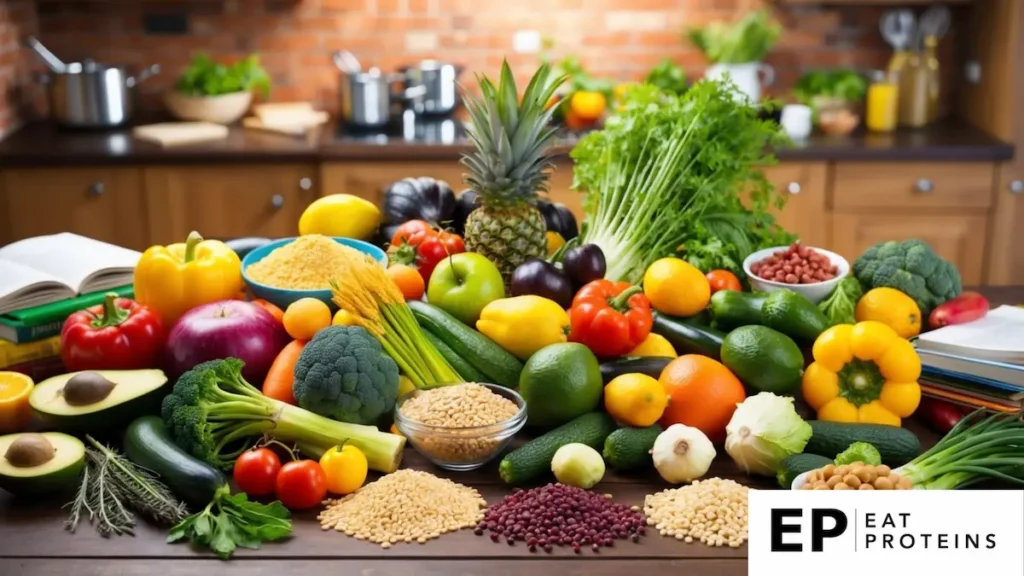
A vegan diet offers numerous nutritional benefits. It emphasizes essential nutrients while promoting overall health through plant-based foods. I find it important to highlight what nutrients are vital and how they contribute to well-being.
What Are the Essential Nutrients in a Vegan Diet?
A well-planned vegan diet can provide all the essential nutrients needed for good health. Key nutrients include:
- Protein: Sources like lentils, chickpeas, and quinoa are excellent. They help build and repair tissues.
- Iron: Plant-based iron can be found in beans, spinach, and fortified cereals. Pairing these with vitamin C-rich foods, like citrus fruits, enhances absorption.
- Calcium: Crucial for bone health, I can obtain calcium from fortified plant milks, tofu, and leafy greens like kale.
- Vitamin B12: This vitamin is not naturally found in plant foods. I recommend fortified foods or supplements to meet my needs.
- Omega-3 Fatty Acids: I can source these from flaxseeds, chia seeds, and walnuts to support heart health.
By focusing on these nutrients, I can maintain a balanced and healthy diet.
What Are the Health Benefits of a Vegan Diet?
Adopting a vegan diet can lead to several health benefits. Studies suggest that it may reduce the risk of chronic diseases. Here are some key advantages:
- Heart Health: A plant-based diet is often lower in saturated fats. This can contribute to lower cholesterol levels and reduced heart disease risk.
- Weight Management: Many find that vegan diets help in maintaining a healthy weight due to high fiber content. This keeps me fuller for longer with fewer calories.
- Reduced Inflammation: Foods like fruits, vegetables, nuts, and seeds are rich in antioxidants. These can help lower inflammation in the body.
- Improved Digestion: The high fiber content from whole grains, fruits, and vegetables supports a healthy digestive system.
These benefits make a vegan diet appealing for those looking to enhance their overall health.
What Are Common Vegan Ingredients?
I will discuss important ingredients commonly used in vegan diets. These include plant-based proteins, whole grains, legumes, fruits, and vegetables. Each plays a vital role in creating nutritious and tasty meals.
What Are the Plant-Based Proteins in a Vegan Diet?
Plant-based proteins are essential for a balanced vegan diet. They provide the necessary amino acids for muscle building and overall health. Some top sources include:
- Tofu: A versatile soy product that can be used in stir-fries, soups, or as a meat substitute.
- Tempeh: Fermented soybeans that are packed with protein and have a firm texture.
- Legumes: Such as lentils, chickpeas, and black beans. These are great in salads, stews, and even burgers.
- Quinoa: A grain that is also a complete protein with all nine essential amino acids.
Incorporating a variety of these sources ensures I get enough protein in my meals.
What Role Do Whole Grains and Legumes Play in a Vegan Diet?
Whole grains and legumes are significant staples in vegan diets. They provide fiber, vitamins, and minerals. Some examples of whole grains include:
- Brown rice: A healthy grain that is versatile and easy to cook.
- Oats: Great for breakfast or as an ingredient in baked goods.
- Barley: Nutty in flavor and can be added to soups or salads.
Legumes, like beans and peas, offer both protein and fiber. They help with digestion and keep me full longer. Combining grains and legumes in meals, like a rice and bean bowl, provides a balanced nutrient profile.
What Fruits and Vegetables Are Included in a Vegan Diet?
Fruits and vegetables are crucial for a well-rounded vegan plate. They are rich in vitamins, minerals, and antioxidants. Eating a variety is key to getting different nutrients. Here are some highlights:
- Leafy greens: Such as spinach and kale, provide calcium and iron.
- Colorful veggies: Carrots, bell peppers, and broccoli add essential vitamins and fiber.
- Fruits: Berries, bananas, and apples offer natural sweetness and nutrients.
Incorporating a rainbow of fruits and vegetables ensures I get a mix of nutrients while keeping meals exciting and flavorful.
How Can You Create Balanced Vegan Meals?
Creating balanced vegan meals is easy when I focus on three key areas: protein, healthy fats, and variety. Each component plays an essential role in ensuring that my meals are nutritious and satisfying.
How Can You Incorporate Protein in a Vegan Diet?
Protein is vital in a vegan diet, as it helps build and repair tissues. I include a variety of protein sources to meet my needs. Some excellent options are:
- Legumes: Beans, lentils, and chickpeas are great choices. They provide both protein and fiber.
- Tofu and Tempeh: These soy-based products are versatile and rich in protein.
- Quinoa: This grain acts as a complete protein, meaning it contains all essential amino acids.
- Nuts and Seeds: Almonds, chia seeds, and hemp seeds add protein and healthy fats as well.
By mixing these sources throughout my meals, I ensure I’m getting enough protein every day.
How Can You Use Healthy Fats in a Vegan Diet?
Healthy fats support many body functions, including brain health and hormone production. I focus on incorporating sources like:
- Avocados: These are not only creamy and delicious but also packed with healthy monounsaturated fats.
- Olive Oil: I use extra virgin olive oil in dressings or cooking for its heart-healthy properties.
- Nuts and Nut Butters: These provide essential fatty acids and can easily enhance smoothies or oatmeal.
Portion control is essential, as fats are calorie-dense. I include just enough to complement my meals without overdoing it.
How Can You Add Variety to a Vegan Diet?
Eating a wide range of foods helps me get all the vitamins and minerals I need. I regularly rotate my fruits and vegetables, ensuring a colorful plate. Some strategies include:
- Seasonal Produce: I choose fruits and vegetables based on the season to maximize freshness and flavor.
- Whole Grains: I switch between brown rice, barley, and farro to keep meals interesting and nutritious.
- Herbs and Spices: Adding different herbs and spices can elevate flavors, making meals fun and enjoyable.
By mixing up my ingredients, I not only prevent boredom but also support my overall health.
